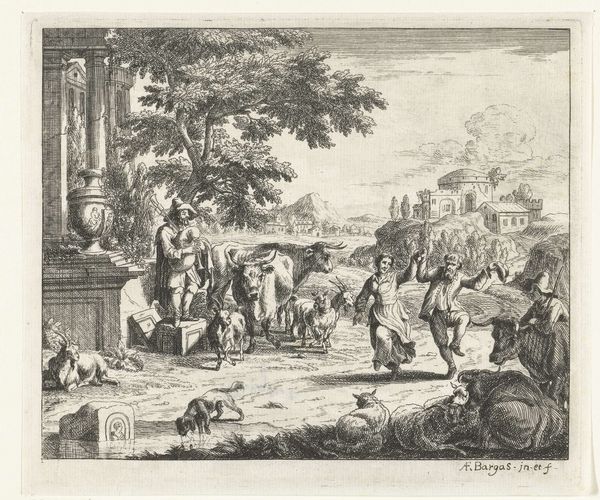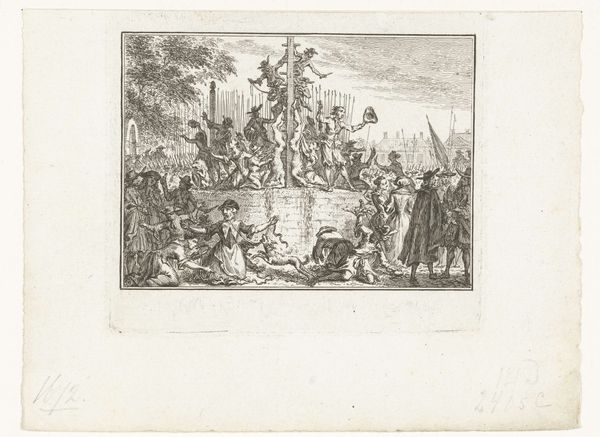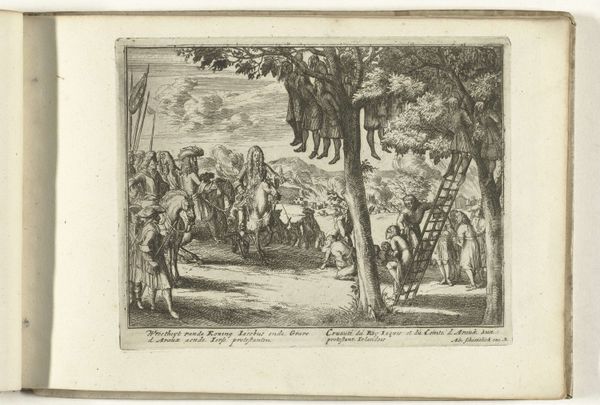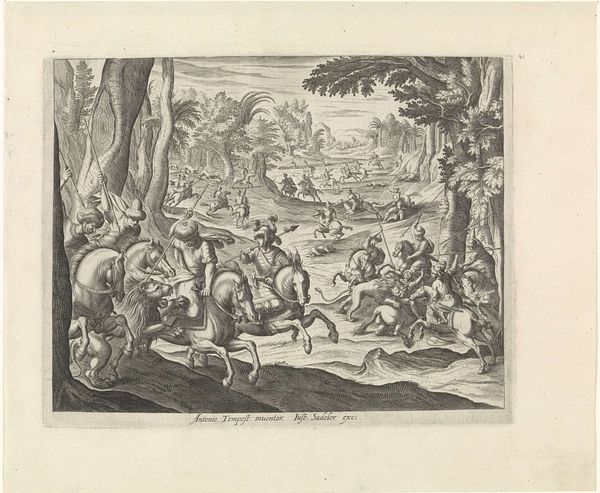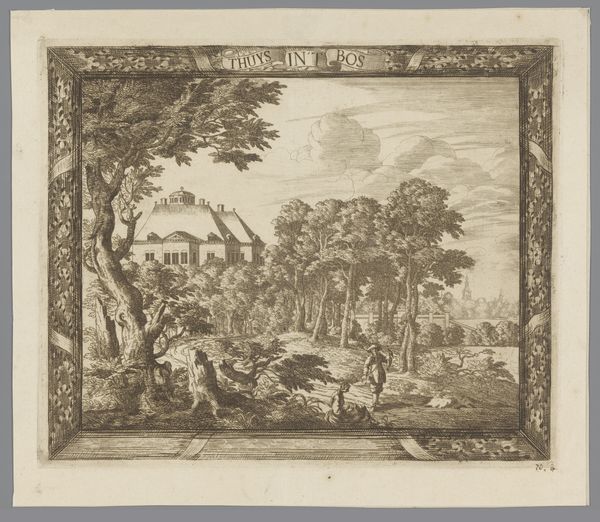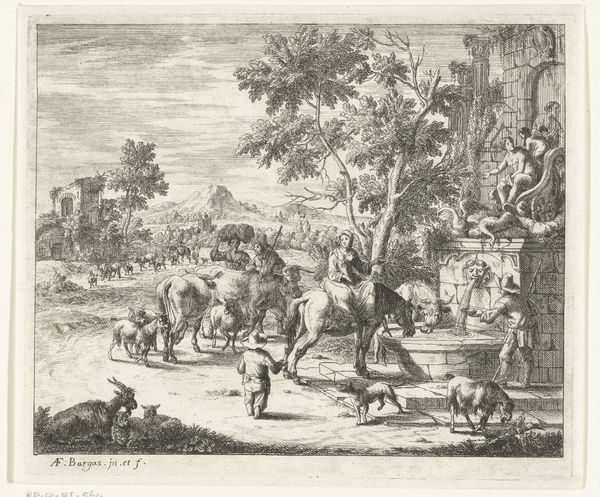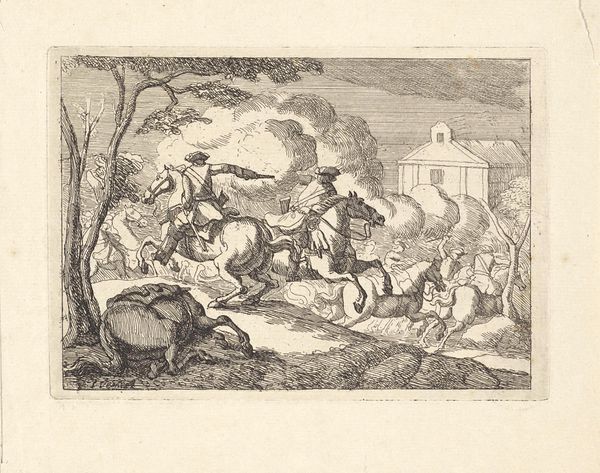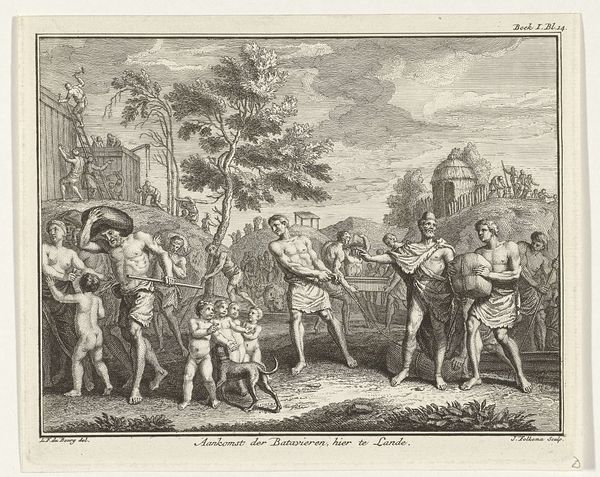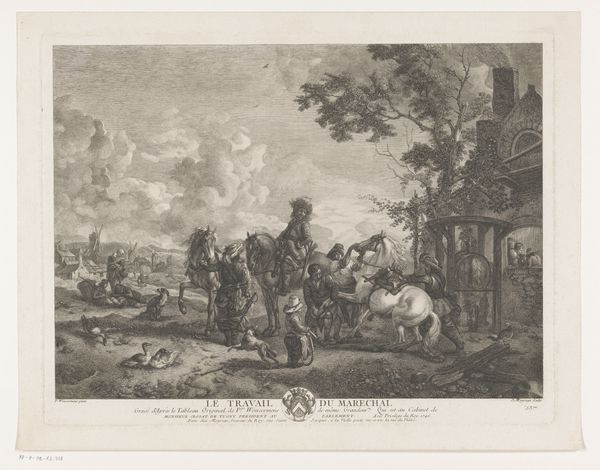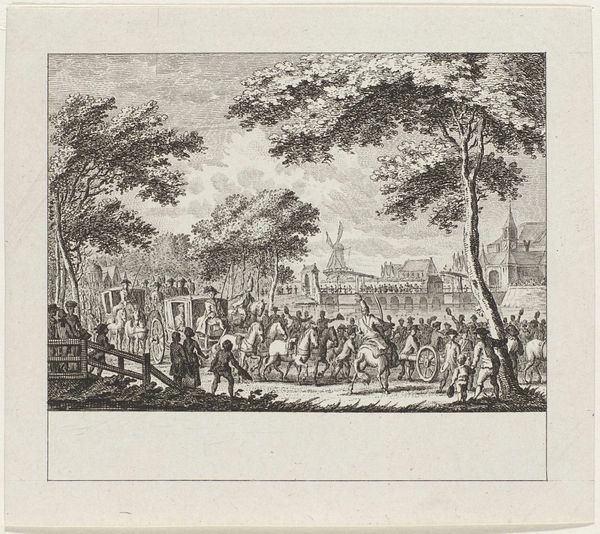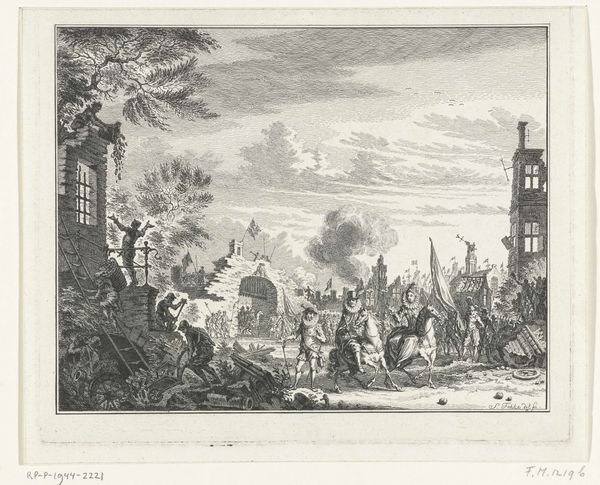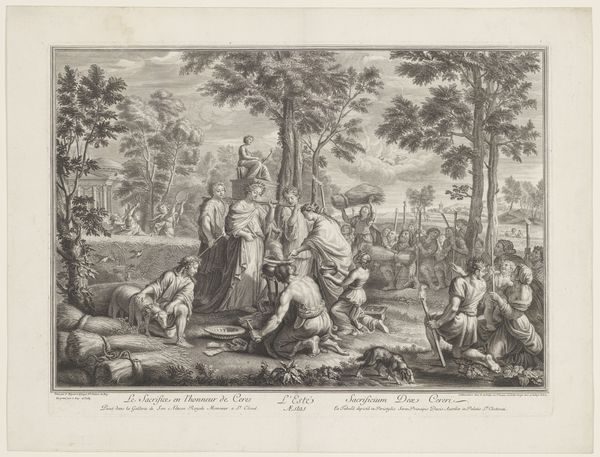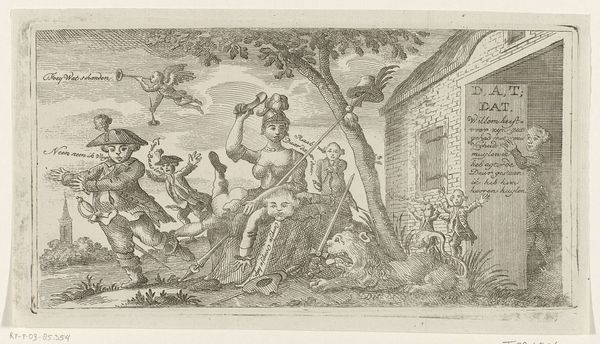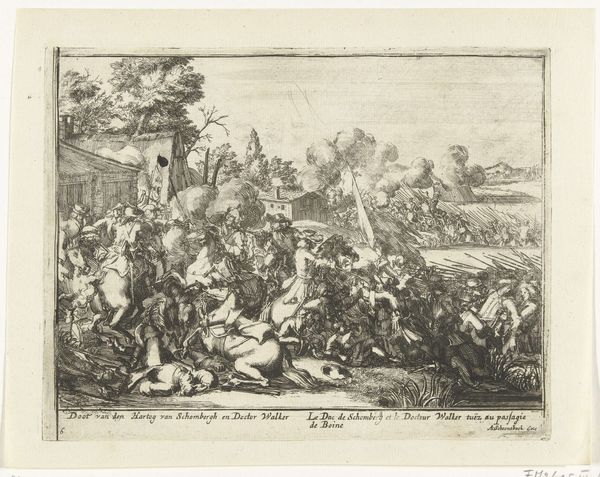
drawing, print, ink, engraving
#
drawing
#
baroque
#
dutch-golden-age
# print
#
landscape
#
ink
#
genre-painting
#
engraving
Dimensions: height 96 mm, width 105 mm
Copyright: Rijks Museum: Open Domain
Curator: This engraving, dating from between 1722 and 1784, is titled "Bataafse nederzetting", or Batavian Settlement, and is attributed to Simon Fokke. It’s currently held at the Rijksmuseum. Editor: It's captivating! The level of detail, the etching…you can almost feel the labor behind creating each line, giving form to a whole settlement and hinting at the work in it. It's so meticulously crafted. Curator: It’s fascinating how Fokke, an engraver, would disseminate images of national foundation myths and cultural heritage in the period. It's less about documentary truth and more about constructing a specific narrative. Editor: Exactly! And look at the layout! At the center, an individual is prominently positioned, almost elevated, wielding tools – or symbols thereof – near some other workers, alongside livestock. What relationship to labour is he symbolizing? It feels very deliberately arranged to communicate an entire economic hierarchy through gesture and placement. Curator: Indeed. The idealized portrayal of early Batavian society served to legitimize the political and social structures of the Dutch Republic. Engravings such as these played a significant role in shaping national identity and promoting civic values, linking the modern Dutch citizen to noble ancestors. This type of romantic image of a national past would shape much political policy later. Editor: Which is also a point about its own process as representation. While the image presents labour and social structure, the labor involved in its production – the painstaking etching of the copper plate – itself participates in creating the society it reflects. Who do you think might've used or interacted with this? Curator: Prints like this circulated widely among the educated middle class. They would be bound in books, displayed as single sheets, functioning as both decorative objects and vehicles for historical and moral instruction. Think how those viewing it framed themselves and others within their own current world. Editor: So interesting to consider. I appreciate understanding it both as a piece with its own material presence that speaks of specific craft and industry, and as a vehicle for larger political, almost ideological forces. Curator: Yes, I hope visitors leave considering the various social contexts embedded in an image seemingly presenting itself innocently.
Comments
No comments
Be the first to comment and join the conversation on the ultimate creative platform.
